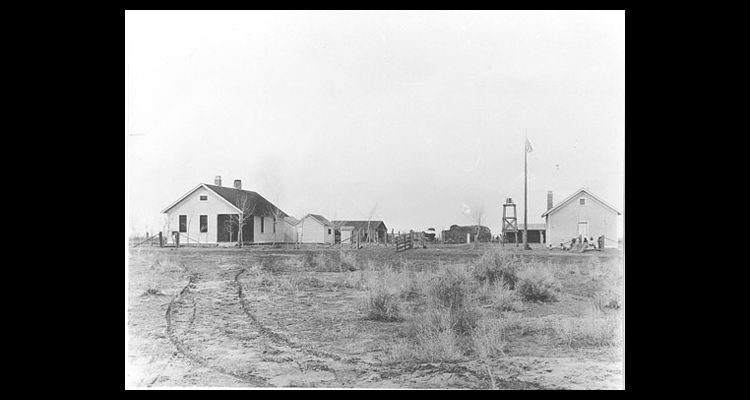Fallon Indian Day School
Churchill County, like other counties throughout the West, attempted to comply with federal mandates for Native American education in the early 1900s. Federal policy called for Native American children to be educated in English-speaking schools. The paternalistic goal was to assimilate Native American children into mainstream America. Proponents of the approach maintained that this would provide young American Indians with educational opportunities equal to those available to others. The plan was to place Native American children into institutions where their traditional values could be eradicated and replaced through a curriculum designed and sanctioned by the federal government. In 1906, this forced assimilation affected over one hundred Paiute and Shoshone children living on the Stillwater Reservation.
Local officials, working with Lillian R. Corwin of the Women's Home Missionary Society, developed plans for the school on the Stillwater Indian Reservation and gained approval from the U.S. Department of the Interior. The school was to be located ten miles east of present-day Fallon and would include a main school room, a kitchen, dining room, and quarters for a teacher and cook. Notice was given that "Proposals for the Fallon Indian Day School buildings would be received by the Commissioner of Indian Affairs in Washington, D.C., until June 22, 1908–for furnishing and delivering the necessary materials to construct a school house and employee's quarters." The contract awarded to I.H. Kent of Fallon allocated $2,027 for construction costs.
The school opened its doors to students on September 30, 1908, even though furniture would not arrive until February the following year. School employees included a female teacher for academics and a male teacher to instruct the children in practical farming. Instruction, following the national model, focused on vocational training. Girls were taught sewing, cooking, laundry work, and some nursing. Boys received instruction in farming, ranching, dairying, carpentry, and mechanics. The children attended school during the day and returned to their homes in the evening.
By the 1920s the original facilities began to show the strain of growing enrollments, and the need for larger buildings became increasingly apparent. Half-day sessions were started. Lessons took a half day with the rest of the day being spent on vocational work, tending to gardens, caring for animals, and painting, building, and repairing the school. Unfortunately, larger buildings were not in the school's future.
A gradual but steady decline in student enrollment began in the 1930s and continued into the 1940s. Most of the students from fourth through eighth grade had either moved away from the reservation or were attending schools in the Fallon area, and many of the older students were already attending the local high school. School officials came to the conclusion that it was no longer economically feasible to maintain a teacher, run a bus, and fund the daily operation of the school.
Without ceremony, after thirty-five years in existence, the Fallon Indian Day School was closed in October 1943 and the remaining teacher transferred to a school near Yerington, Nevada. Today, the original school site is part of the Stillwater Indian Reservation Headquarters and is occupied by the reservation's housing authority.
Article Locations
Related Articles
None at this time.
Further Reading
None at this time.
